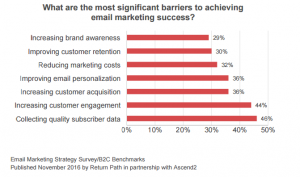 Online affiliate marketing began with a promise: Leverage the massive reach of the internet while only spending in proportion to revenue achieved. Unfortunately, the promise hasn’t come to fruition.
Online affiliate marketing began with a promise: Leverage the massive reach of the internet while only spending in proportion to revenue achieved. Unfortunately, the promise hasn’t come to fruition.
Over the years, marketers have fallen victim to affiliate exchanges, ad technologies and publishing practices that weren’t created in brands’ best interests. But this doesn’t mean affiliate marketing doesn’t work – it can. But it requires marketers to regain control of their affiliate relationships and marketing processes by creating customized, transparent ecosystems.
The rise and fall of affiliate marketing
The idea was a good one: advertising marketplaces (also known as “affiliate networks”) allowed marketers (advertisers) to create a set price for specific actions, such as lead generation, driving clicks or selling products, in order to create a proportionate amount of revenue.
Media partners (or publishers, affiliates, etc.) would sell their services in these marketplaces, acquire the marketer’s ad, and place it in front of their loyal audience (typically via a number of owned web properties or email lists).
The result was supposed to be a set number of actions for a set price. It was easy, and all parties involved would make lots of money while casting aside the bad old days of “spray and pray” marketing.
Of course, the utopian promise of affiliate marketing not only failed to deliver, but in many cases has been counter-productive to marketing progress. Instead of a creating an environment where marketers and media companies could connect for mutual benefit, affiliate marketing spawned an industry based on dubious practices and, in some cases, outright fraud.
Things really went south after the economic crash of 2007. During this time big brand advertisers largely abandoned online advertising, and affiliate-marketing opportunists quickly rushed in to fill the void with their “Make Money on Google,” “Acai Berry Weight Loss” supplements and magical credit repair offers.
Such offers obviously were not easy for affiliates to execute. This in turn accelerated the growth of questionable publishing tactics, which eventually led to fraud. Lead stuffing, spamming, fraudulent credit card information, click bots, hijacked marketer keywords, etc. became commonplace practices as the affiliate space became more competitive.
The final factor in this mess was the lack of meaningful regulation. This entire world of online advertising was so new and unknown that regulators simply couldn’t keep pace with the breakneck evolution of unethical practices. There wasn’t much anyone could do to stop it.
As the economy revived, quite a few big brand marketers began dipping their toes back into the affiliate waters only to get burned by the proliferation of unethical practices and lack of oversight. Brands began abandoning affiliate marketing altogether as any rewards seemed outweighed by substantial risk.
In other words, there was something of a perfect storm, dragging affiliate marketing into an abyss from which it’s still trying to recover.
The affiliate landscape today
Seeing the entire industry spiraling out of control, intelligent and opportunistic media-focused companies began going about things a little differently.
Some, such as Commission Junction, ShareASale and LinkShare, rose to prominence by bucking the blind-marketplace trend and connecting advertising marketers directly with their affiliates. This eliminated some of the ambiguity surrounding ad placements.
Others developed robust tracking technologies that helped affiliate networks understand the types of activities taking place on their clients’ offers during execution. Still others created technologies that would detect click fraud, sniff out bot traffic, reject fraudulent leads and blacklist spammers.
With these new technologies and more transparent marketplaces, the industry entered its second, and current, phase: Affiliate Marketing 2.0.
Things have certainly improved. However, as with any dynamic situation, much is still changing, and while some of the old problems are gone, new ones continue to pop up:
- The open marketplaces mentioned above provide vast reach, but that reach comes at a significant financial cost to both the marketer and the publisher.
- The dominant tracking technologies of today are difficult for marketers to use and built in the interests of the affiliate networks rather than the marketing advertiser.
- The excellent technologies that exist to prevent fraud and provide value ads throughout the ecosystem largely exist as silos unto themselves, are costly and frequently have a difficult time connecting with one-another (much less working together to provide the marketer with a unified understanding of their marketing spend).
Further, the current state of the industry still relies primarily upon trial-and-error to create successful campaigns. Most of the technologies look only at what is, or has been, with very few tech solutions providing any insight into what is to come, much less do anything whatsoever to anticipate problems or algorithmically optimize campaigns on the fly.
Like any big market shift, an industry rarely gets it right on the first or second phase. In order to thrust affiliate marketing into the mainstream consciousness of the branded marketing world, we must progress toward our next iteration: Affiliate Marketing 3.0.
The emergence of customizable affiliate ecosystems
The affiliate exchanges and ad tracking technologies discussed above force their models onto their marketing clients; they’re inflexible and thereby limit control, transparency, scale and optimization. The highest performing companies in this next wave of affiliate marketing will shed the exchanges and affiliate-driven tracking technologies to build their own customizable affiliate ecosystems, specific to individual business needs and consumer-driven values.
This of course will require technologies focused on marketer needs rather than those of the affiliate networks. Marketers will need various systems to identify, onboard and execute media campaigns with the best affiliates – and-selected media partners with the right audiences for the marketer’s business. More specifically, such tech will enable marketers to:
- Connect directly to media partners
- Track all advertising campaigns
- Prevent fraudulent activity
- Algorithmically optimize campaigns
- Benefit from full-funnel, closed-loop analytics
- See and anticipate trends
- Predict negative outcomes
- Forecast pipeline and customer acquisition outcomes
- Prove positive ROI
Marketers will need to take much initiative here if they are to be successful, because none of this is yet available in an out-of-box solution. …but Affiliate 3.0 is possible. With some creative insight, initiative and the right technologies, highly profitable affiliate marketing can become a reality – but no one will hand it to you.
Many brands – those forward-thinking, innovative companies at the vanguard of their respective industries – are well on their way to making customizable affiliate ecosystems a reality. And once achieved, affiliate marketing will shed the stigma of its dodgy past and emerge as a thriving, vital part of any marketing organization hoping to achieve success.
(260)
Report Post






